2024 starts with off-the-charts heat in the oceans. Here's what could happen next.
As the final numbers show that 2023 was the hottest year on record, the burning question is whether 2024 will be even hotter than the blistering year that preceded it.
The answer may lie in the world’s oceans.
Ocean temperatures are at or near their peak and ocean surface temperatures are “off the chart,” since rocketing up last spring, one group of scientists said last week in a letter published in the journal Advances in Atmospheric Science.
Because the oceans cover 71% of the planet and absorb most of the excess heat from global warming, what happens in the water doesn’t stay in the water. The warmth in the oceans helps control the atmosphere and supercharges wild weather, the scientists said.
Depending on which group of scientists did the calculations and their data analysis, last year’s global average temperature was between 1.18 and 1.5 Celsius warmer than the average over the last century.
Rising greenhouse gas concentrations in the atmosphere are primarily responsible, according to federal officials and climate scientists around the world. But a variety of natural patterns and human impacts also came together to push land and sea temperatures to new record highs.
Chief among these influences was El Ni?o, one phase of a natural cycle in the Pacific Ocean that brings warmer water to the region along the equator west of South America, weakens trade winds and redistributes ocean heat to the north and south. El Ni?o’s intensity in the ocean over the coming months is expected to be key in adjusting the world’s thermostat.
Formed last May, El Ni?o is forecast to fade by summer, but whether its decline comes fast enough to lower the Earth’s average temperature for this year remains to be seen. And El Ni?o isn’t the only thing simmering in the oceans in 2023.
Record heat in the Atlantic Ocean in the northern hemisphere – which began rising before El Ni?o – also is blamed for pushing world temperatures higher last year. And scientists have a less clear understanding of what’s going on in the Atlantic than they do the Pacific.
For now, several climate scientists told USA TODAY they put the odds of 2024 being even hotter than 2023 at near even, or slightly higher.
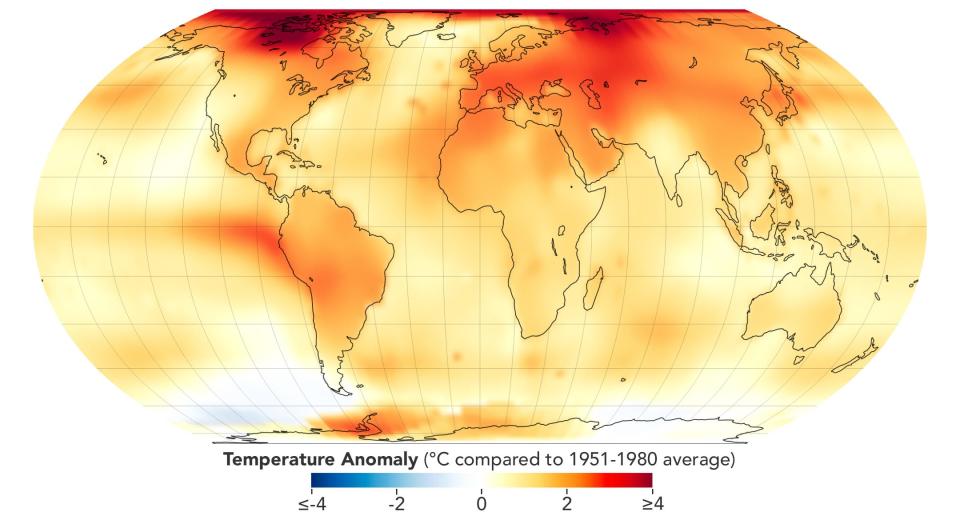
How hot was 2023?
So hot that even the world's leading climate scientists were surprised.
"We were looking at this and we were frankly astonished," said Gavin Schmidt, director of the National Aeronautic and Space Administration’s Goddard Institute for Space Studies.
The year wound up hotter than the previous record hot year – 2016 – by “a clear and definitive margin,” stated the annual report from Berkeley Earth.
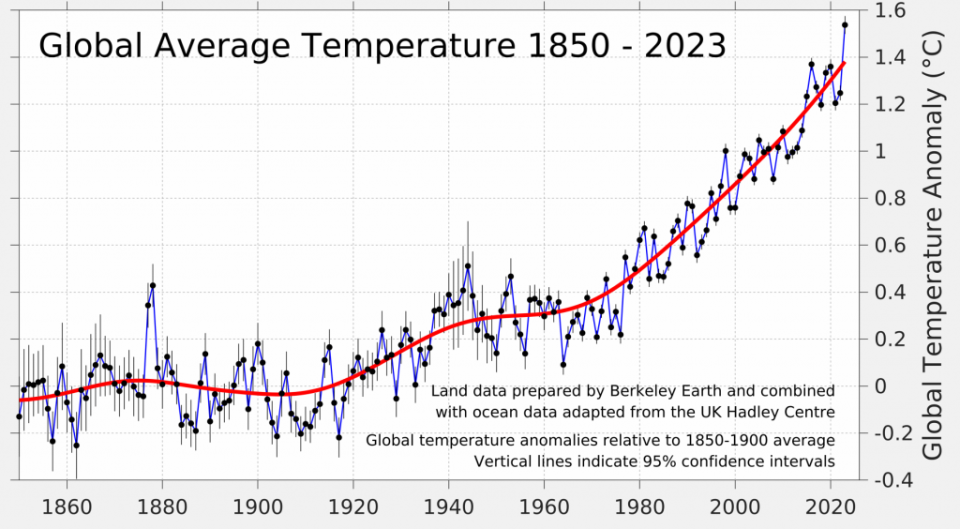
That's even though scientists said the 2016 El Ni?o was likely stronger than the current El Ni?o.
Every month from June through December was the hottest on record, and July was overall the hottest month ever recorded on the planet.
"Our normal explanation for what's going on does not work this year," Schmidt said. "There is a lot more work that needs to be done to understand what really happened in 2023."

What are the odds of 2024 being warmer?
“If 2024 follows the old patterns, then it will be roughly as warm as 2023 – 50:50 odds whether it’s warmer or cooler,” Schmidt said. Last year definitely did not fit the expected pattern.
The question is “whether that was a blip or the start of something new,” he said. “If there is something else systematic going on, then it will be warmer.”
This year should be similar to or perhaps warmer than 2023 because the same dynamics are at work, said Michael Mann, climate scientist at the University of Pennsylvania and co-author of the letter published in the atmospheric sciences journal.
“El Ni?o will persist through the first half of the year and so the ocean will continue to be exporting heat to the surface and atmosphere, raising global surface temperatures,” Mann said. “Just which one wins out – 2023 or 2024 – will largely depend on when the El Ni?o peaks and how long it persists into the year.”
Berkeley Earth put the odds at better than even that 2024 will be warmer. They cite recent studies reporting the pace of global warming may be accelerating, but conclude it’s too soon to say for sure.
What’s happening with El Ni?o?
El Ni?o, which developed after May 2023, brought in record high sea surface temperatures and sea temperatures and ocean heat content are still at record high levels, said Kevin Trenberth, distinguished scholar at the National Center for Atmospheric Research and another co-author on the journal article.
Sea surface temperatures typically peak around December during El NI?o, but its biggest effects are typically in February, he said.
El Ni?o moves heat around in the ocean and then into the atmosphere, mostly as evaporation, which cools the ocean and moistens the atmosphere, Trenberth said. “When the moisture rains out, often thousands of kilometers distant, producing prodigious rains or snows, it releases the latent heat that went into evaporating the moisture and it warms the atmosphere.”
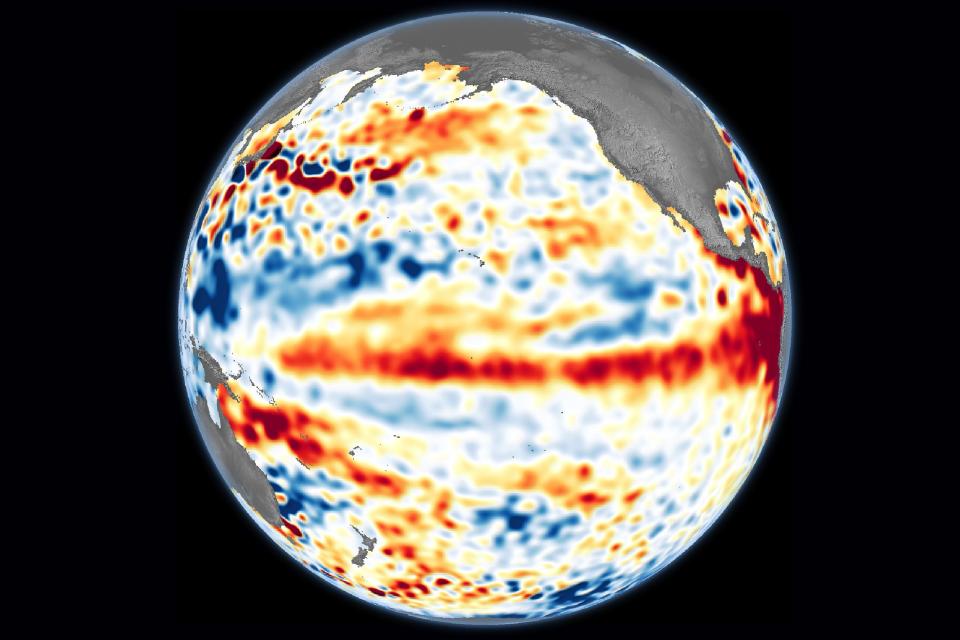
NOAA forecasts a return to neutral conditions by the three-month period from April to June, possibly sooner, said Michelle L’heureux, a scientist at the National Oceanic and Atmospheric Administration’s Climate Prediction Center.
Once El Ni?o starts to decay, ocean heat across the tropical Pacific Ocean starts changing fairly quickly, allowing below-average temperatures close to the ocean’s surface to start expanding and shifting eastward, she said.
The ocean could shift to a La Ni?a later this year, NOAA said. Whether that happens early enough to balance out the warm temperatures expected during the first half of the year will help determine whether 2024 is cooler than 2023, or even warmer.
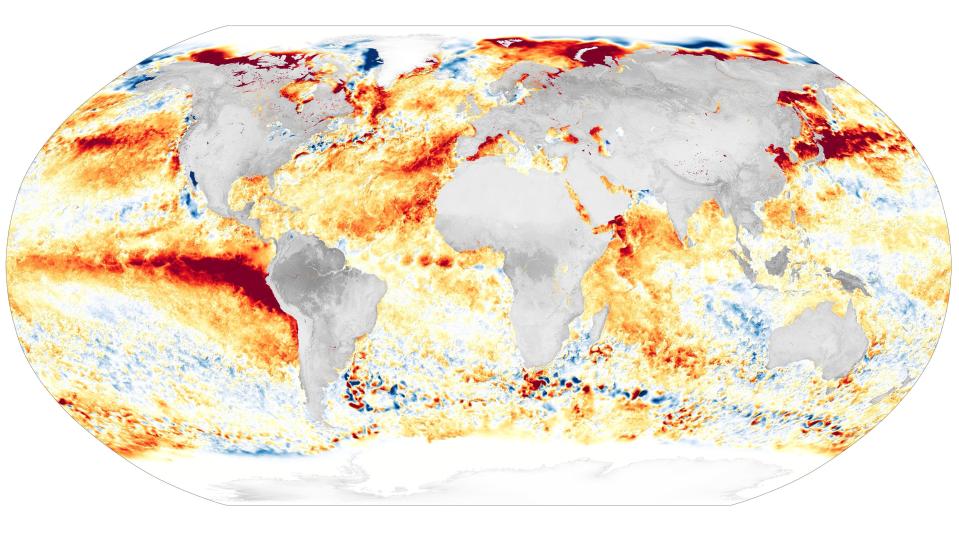
While the Pacific responds quickly to a fading El Ni?o, heat in the other oceans may lag for months.
May 2023 through May 2024 is likely to be the new warmest period on record, Trenberth said. And with El Ni?o's effects lingering at least five months into 2023, possibly longer, “it may well result in 2024 being the warmest calendar year in global surface temperatures.”
Visualizing climate change Global warming's impact on Earth explored
Why has the Atlantic Ocean been so hot?
“The changes in the North Atlantic were extreme and not something that was expected in advance,” said Robert Rohde, a physicist and lead scientist at Berkeley Earth.
Based on historical observations, a deviation like the temperature spike in 2023 should occur less than once per century, Rohde and his Berkeley Earth colleagues wrote in their report.
A conglomeration of things possibly came together to drive the spring leap in temperatures in the Atlantic, including rising greenhouse gas emissions in the atmosphere, random natural variability, the 11-year solar cycle and an enormous eruption of water vapor from the Hunga Tonga volcano eruption in 2022, the team concluded.

Less dust blowing over from the Sahara Desert and cleaner shipping emissions also have been cited as influencing factors.
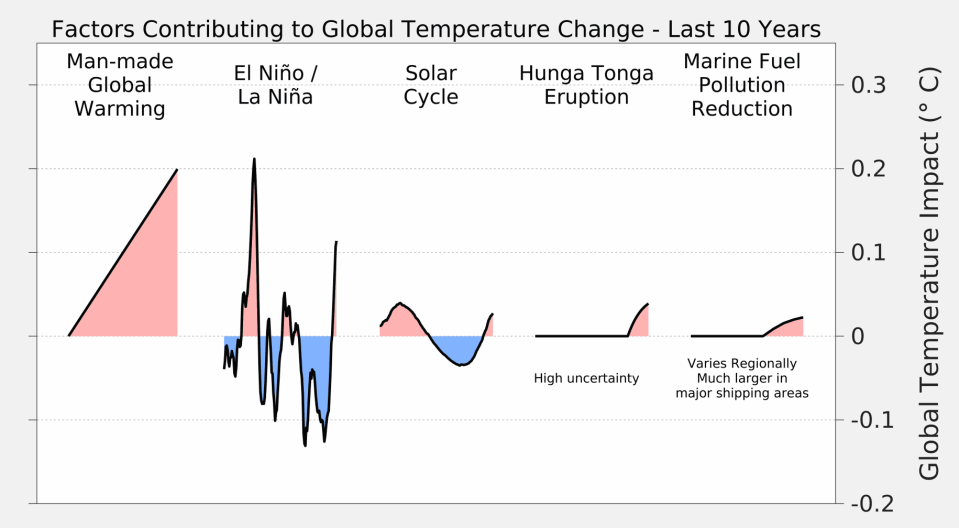
The uncertainties are "a little disconcerting" Schmidt said. But he's confident that additional research later this year will help explain the influences behind the temperature spike in the Atlantic. They have updated information arriving on the aerosol emissions and volcanic effects to add into climate models, he said, and additional monitoring in 2024 will help scientists decide how much of the impact was random.
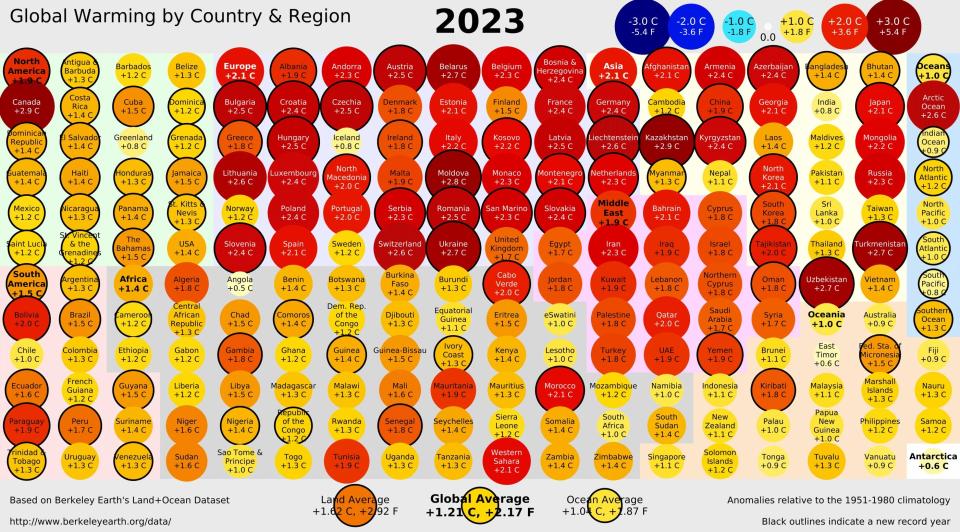
This article originally appeared on USA TODAY: World's hottest year? 2024 starts with off-the-charts ocean heat.
